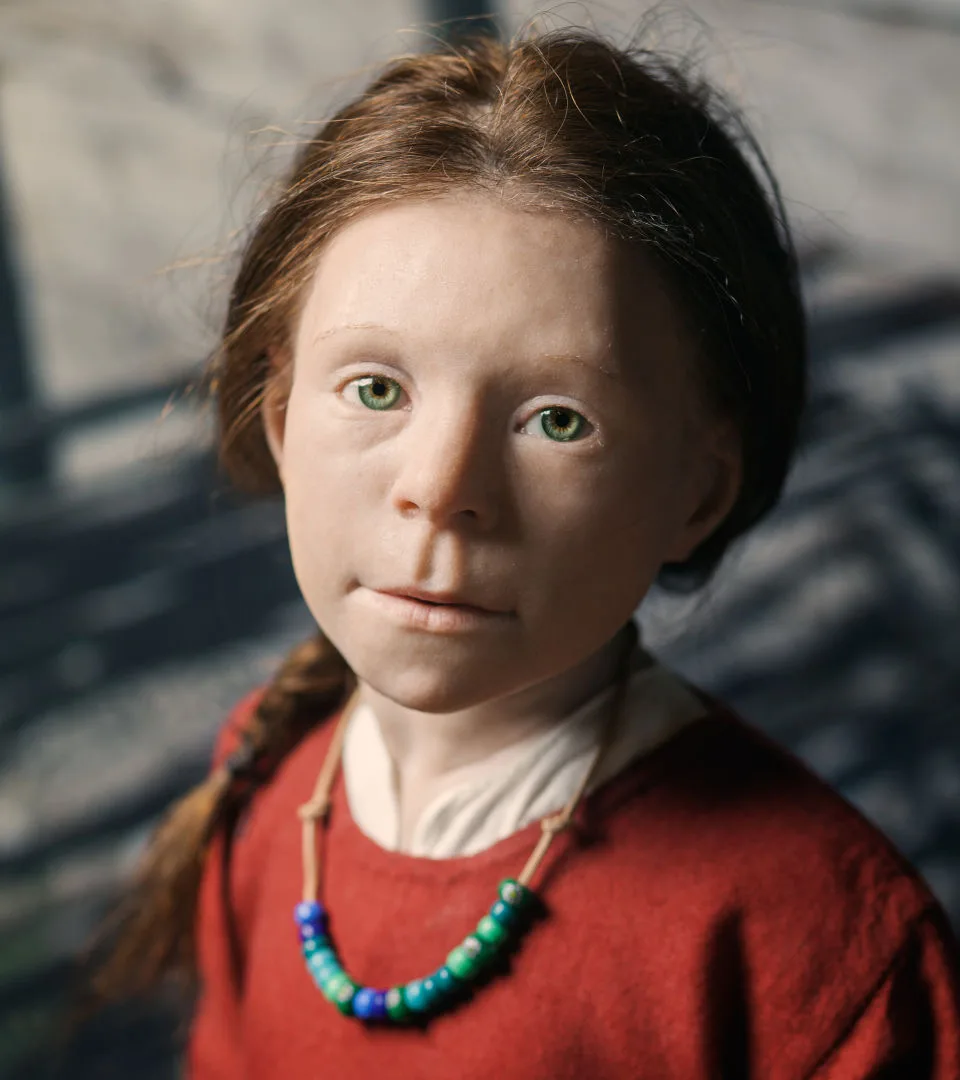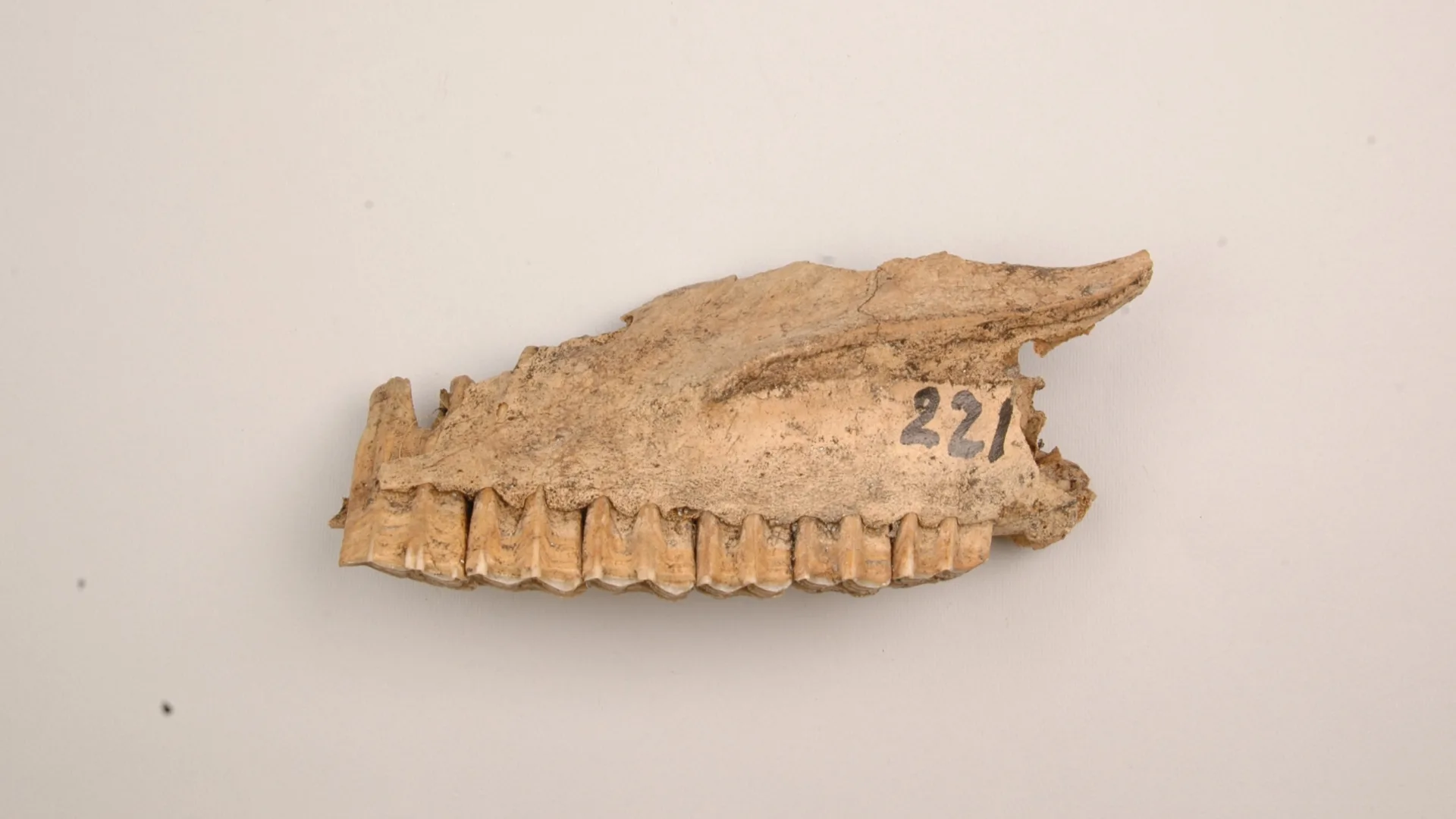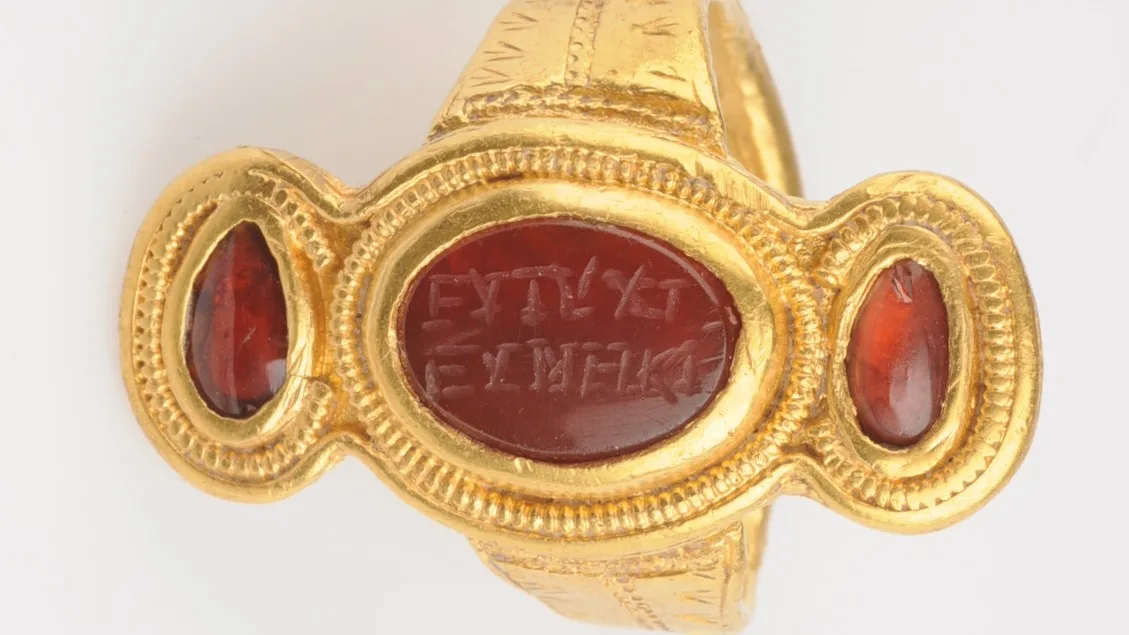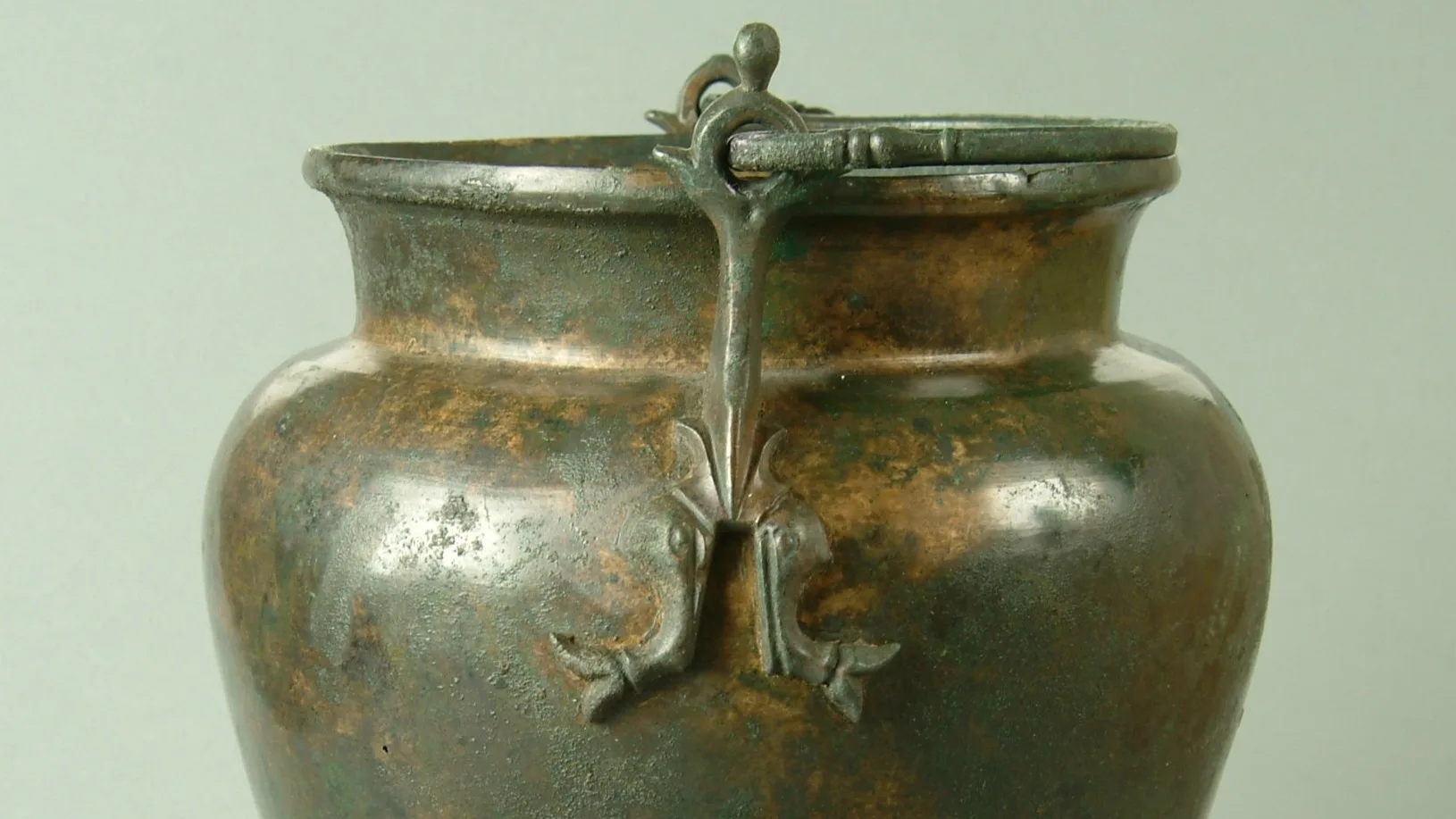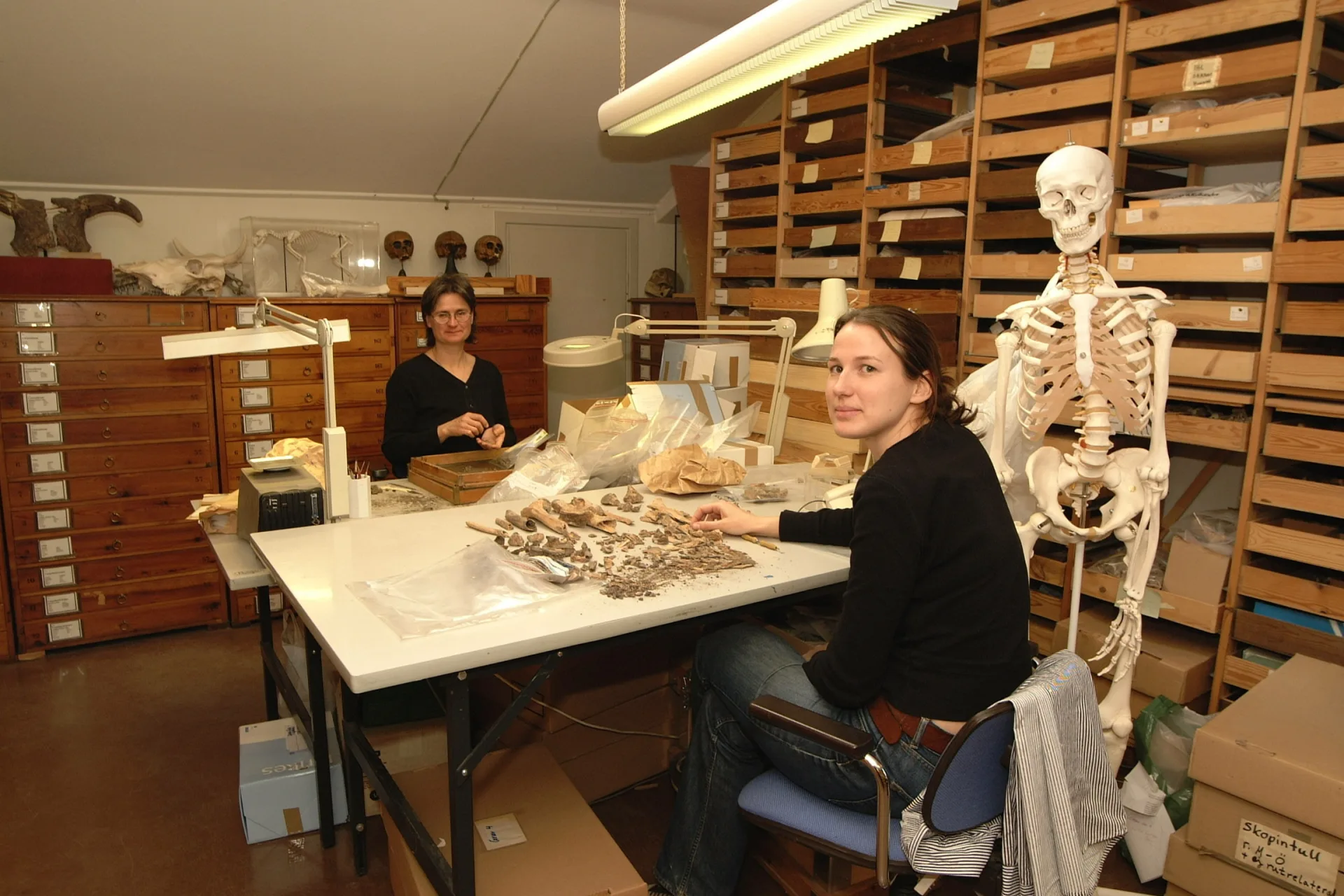The Birka Girl and other children of the Viking Age
Without modern healthcare, widespread childhood mortality was a fact in the Viking Age. Yet children were present everywhere, and many traces of them remain. Carefully prepared graves also show that children were regarded as important members of their communities. One such child was buried near the trading centre of Birka, on the island of Björkö in Lake Mälaren, some 1,100 years ago.
The Birka Girl
Strictly speaking, we cannot be entirely certain that the child in the grave was a girl, but the grave goods strongly suggest so. In a society with a sharp distinction between female and male roles, burial gifts clearly reflected life. Men and boys were more often interred with weapons, horses and hunting equipment, while textile tools and various kinds of jewellery are more frequently found in women’s and girls’ graves.

Skeleton
Skeleton of the Birka Girl. Grave Bj 463, Birka.
The Birka Girl was discovered in a burial ground north of the hillfort. She was between five and six years old when she died and was given a costly burial. Her grave contained a gilded brooch, glass beads cast around a gold or silver core, a knife, and a bone container with sewing needles. These were expensive gifts, revealing that the girl’s family was well-off.
Birka, the trading centre
Birka emerged in the mid-8th century AD. As kingdoms began to take shape, one effective way for a king to consolidate power was to establish trading centres. The king himself – though we do not know which one – probably resided on the neighbouring island of Adelsö. Birka soon developed into a key hub for trade across the Baltic Sea. Goods and people came and went from every corner of the known world.
Inside the town, surrounded by an earthwork rampart, there was a maze of wooden houses and narrow lanes. Craftsmen of all kinds worked there: smiths, jewellers in bronze and precious metals, and artisans in bone and horn.
Not far away stood Birka’s hillfort, where warriors defended the town against attack. Around AD 970, Birka ceased to function as a hub for Baltic trade. A combination of land uplift and the advent of larger ships rendered the waterways impassable, and the king moved trade and other central functions to Sigtuna.
Child’s play in the Viking Age
From Birka we also have toys and objects once used by the town’s children. A horn duck and a miniature human foot carved in bone may have been playthings. In a number of children’s graves, small bronze bells have been found. These may have served as rattles, or perhaps as amulets.
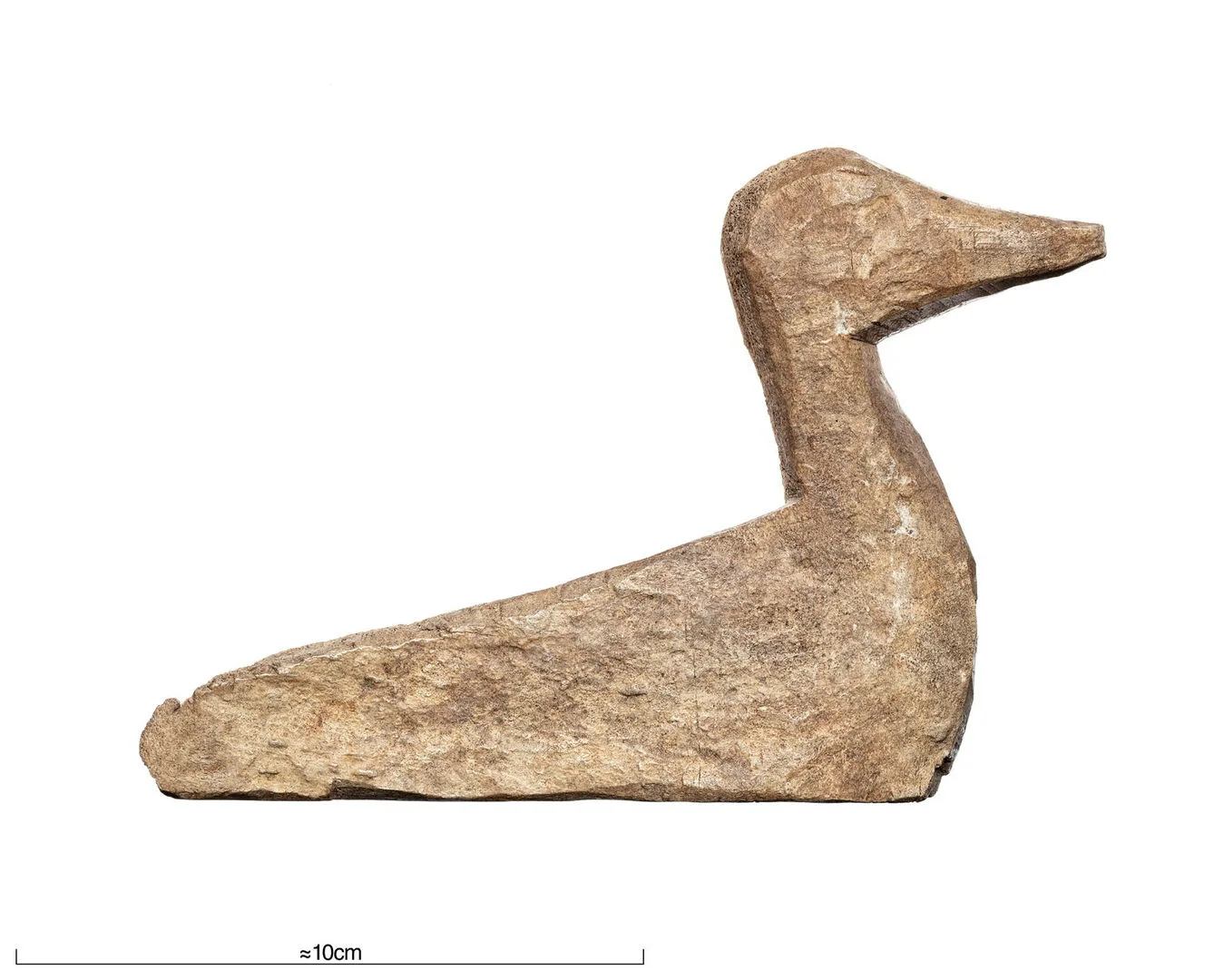
Figurine
Figurine depicting a bird, perhaps a mallard or a duck. Found at Birka.
The Birka Girl is an example of how children’s graves could be furnished with objects normally belonging to adults. Her brooch, beads and needle case might just as easily have been worn by a grown woman. The same pattern is seen in young boys’ graves, where adult men’s objects sometimes appear.
Such finds suggest that children were closely associated with adult gender roles and other social norms from an early age. They may also indicate that children were considered to grow up quickly. If they survived beyond the age of ten, they had passed the most dangerous stage of childhood – and their chances of living to a ripe old age were fairly good.
